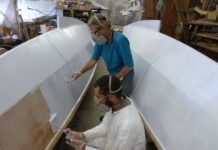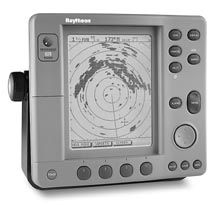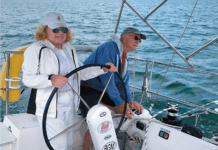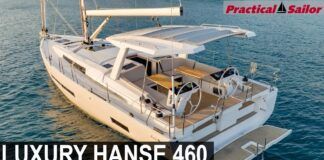From batteries to windlasses
This year, as every year, Practical Sailor focused its testing on what our editors consider to be essential gear, products that few cruising boats can do without. This years look at cruising essentials took our testers from the bottom of the bilge to the tip of the bow roller, as they examined batteries, automatic bilge switches, and anchors for mud. On deck, they put self-tailing winches, mainsheet travelers, rigid boom vangs, and rope clutches through the wringer. And for the long-distance voyagers, they found a sophisticated charge controller that can boost the output of your solar panels.
Whether youre refitting a late 1970s S&S design, replacing tired gear on your Pearson 30, or choosing cruising accessories for a new Island Packet, were confident that the following products, picked from the dozens we tested during 2006, will save you both time and money over the long run.
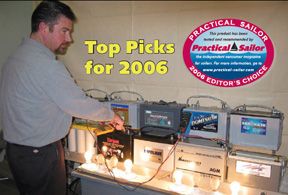
AGM BATTERIES
There are plenty of reasons to dislike flooded-cell batteries: They require electrolyte maintenance; they contain corrosive acid; and they can vent explosive gases when severely overcharged. On the other hand, they are universally available, their initial cost is relatively low, and they tolerate a wide range of recharging voltages all factors that will appeal to the wide-roaming cruising sailor.
Valve-regulated lead acid (VRLA) batteries, because of their sealed, spill-proof design, offer many advantages over conventional lead-acid batteries: increased durability, faster recharging, low self-discharge rate, and higher cold-cranking amps per pound to name a few. Downsides? Deep-cycle VRLA batteries can cost about double what an average-grade deep-cycle flooded cell battery costs, or about 20 percent more than a premium-grade flooded cell.
Our long-term battery tests, set to begin next year, should provide a better idea of whether gel or AGM batteries are more cost-effective than flooded batteries over the long haul. The ability of AGM batteries to accept higher charging current makes them an attractive solution for sailors who put extra hours on heir auxiliary engine simply to keep up with their high energy demands. Seasonal boaters, or those who leave their boat for long periods, will also benefit from the low maintenance VRLAs.
In our tests of group 27 and group 31 gel cells and AGM batteries (March 2006), we looked primarily at battery reserve capacity. But we also ran an amps-per-pound ratio for each tested battery and then factored in the batterys cost and warranty period. Trojans 100Ah Group 27 AGM, ($169, http://www.tro-jan.com/) earned the Best Choice overall honors, and the Mastervolt AGM 12/90 was our recommended Group 31 battery. Deka delivered two Budget Buys: the gel-cell Deka Dominator (8G27M) and the AGM Deka Seamate (8A27M).
BILGE SWITCHES
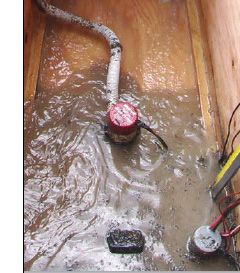
In nitty gritty terms, few tests in 2006 could compare with our grimy bilge pump switch test (January 2006). For this comparison, we built a simulated bilge. Ten gallons of salt water, one pint of very used motor oil, two handfuls of sawdust, two handfuls of fiberglass hole saw shavings, and a half bag of Doritos were added to the test bilge, which rocked on a piece of 6-inch diameter PVC.
We narrowed our focus to 17 stand-alone switches, units that would be suitable companions to the West Marine High Performance 2200 GPH (part no. 491720), the Shurflo Piranha 1000, the Rule 25D, and the Shurflo Piranha 380, the pumps that did the best in our bilge pump comparison (Elec-tric Bilge Pumps, Feb. 15, 2004).
In the end our top pick went to the micro-processor controlled Water Witch 230 ($37, www. defendermarine.com). During testing, the Water Witch 230 was completely immune to pump stutter and performed flawlessly under the worst conditions. Its six-second switch on delay is particularly well-suited for boats with shallow bilges.
In the pivoting arm category, PS recommended the Rule Model 40 and the MPI Sure Bail (DEL-30), and our Budget Buy was the West Marine (part no. 543561). Among the vertical float types, the relatively expensive high-quality switches from Ultra Safety Systems (Mini, Junior, and Senior) earned recommendations, while the Johnson switch (part no. 36152) was our Budget Buy.
ANCHORS FOR MUD
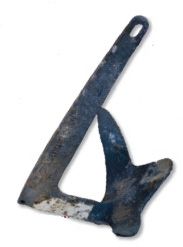
Our search for a low-priced anchor for soft mud bottoms attracted a wide assortment of anchors, ranging in appearance from bizarre to conventional (April 2006). With the objective of finding a versatile and affordable mud hook for a moderate displacement sailboat of about 30 feet, we checked performance at two different scopes, 7:1 and 3:1.
It came as no surprise that the plow-style anchors such as the popular CQR did not do as well in soft mud. The Danforth-style anchors, which have a reputation for decent holding in mud, held well, but they did not come out on top. In the end, our top pick was a 22-pound Claw ($79, www. westmarine.com) from Lewmar, a company that is perhaps best known for its windlasses and winches. This one-piece cast Bruce-style anchor is available in either galvanized or stainless steel construction. It comes in 10 sizes, ranging from 2.2 pounds all the way up to 176 pounds, and fits fairly well on a bow roller. In both scopes, it rated Excellent for its ability to set. It held 470 pounds with little dragging at the long scope, and dragged at 400 pounds with short scope, placing it at the top in both the long and short pull tests. Four Danforth-style anchors also met our expectations to earn Recommended ratings: the Danforth standard (16 pounds), the Danforth Hi-tensile (22 pounds), the West Marine Performance (25 pounds), and the West Marine Traditional (24 pounds).
SOLAR REGULATORS
In the hunt for better energy efficiency, Practical Sailor came across two excellent charge regulators from Blue Sky Energy Inc. (August 2006). Both the The Solar Boost 2000 ($236, http://www.blueskyenergy.com/) and the Solar Boost 3024i ($299) use what is called maximum power point tracking (MPPT) and pulse width modulation (PWM) to make sure that your batteries are getting the maximum possible charge rate from your solar panels.
We monitored the Solar Boost 3024i over several months on one of our test boats in the field. To judge performance and on a typical 80-degree day, with some breeze to help cool the panels, the solar panels on our test boat were delivering 11.6 amps to a battery bank that was about 25-percent discharged. In some cases, output was anywhere from 10-30 percent higher than it would be using a conventional regulator.
RIGID BOOM VANGS
For our test of rigid vangs, we used a dummy mast and boom. We opeated each vang multiple times and examined the construction quality, noted the stroke range, maximum return force, as well as the ease of use, and overall weight. The lightest vang, the Vang Master also provided the smoothest action. This was surprising, because others like the Hall QuikVang or those from Garhauer come with greater mechanical advantage. The Vang Master VM-4 offers 16 to 18 inches of stroke range with up to 500 pounds of return force, and comes with a four-year warranty that covers any breakage under normal use. It sells for $845, including the pump, but not the end fittings ($110 for the boom, $145 for the mast).
ROPE CLUTCHES
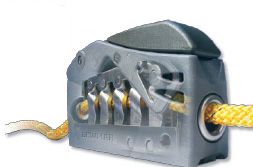
Our test of rope clutches (April 2006) compared three factors: how far a line slips in the clutch when load is applied; how easy it is to release, or bleed, a line that is under load; and how much the clutch abrades a line under use. How important each factor is will depend upon how you intend to use the clutch. In our testing, no single clutch was the best in all three areas and some performed certain tasks best with a particular type of line. In the end, the Lewmar Superlock D2 ($192, http://www.defender.com/) rope clutch was rated the best overall. Its strong point is abrasion-free bleeding, but it also gripped well. This non-cam clutch has a series of in-line parallel rings hinged at the base. A line is run through the rings and then the rings are tilted with a single lever connecting the rings. When tilted, the rings force the line to snake through them, creating friction to hold the line securely. However, if its a deadly grip you need, the Spinlock XAS (which will not bleed a line under load) came out on top in that category.
MAINSHEET TRAVELLERS
In a follow-up to the test of mainsheet travelers in June 2005, PS examined a rugged and relatively inexpensive traveler from Garhauer, the Unibody Mainsheet Traveller (MT-UB-2) in January 2006. This stout I-beam-shaped track extruded from 6061 T-6 aluminum is hardcoat anodized. The base of the Garhauer MT-UB2 ($495, http://www.garhauermarine.com/) is nearly twice the size of the travelers tested in 2005. This adds substantial weight to the unit, but it also makes the
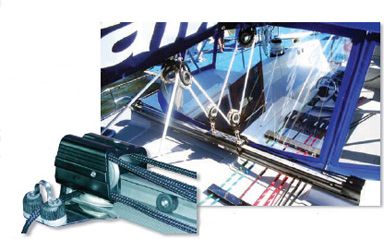
traveler more rigid so that it can easily span cockpits unsupported.
The most notable feature of the UB traveler is that the sheaves on which the travelers control lines turn are integrated into the car, end fittings, and the track. The design is meant to resist torque and distribute the loads from the mainsheet over a greater area of the track, which promotes better control.
Delivering a high-quality traveler at the least expensive price, Garhauer earned kudos both as a Best Choice and the Budget Buy.
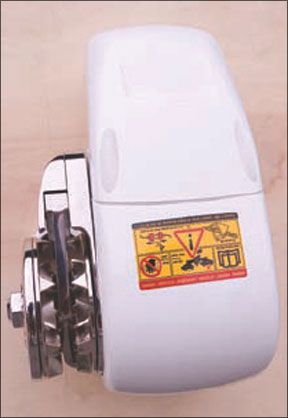
WINDLASSES
We wrapped up our series of windlass reviews with a look at three powerful horizontal windlasses (January 2006). These heavyweight pullers are designed to handle relatively high loads aboard boats not well suited for a vertical windlass, or where having a horizontal capstan would prove valuable for other winching duties. A horizontal windlass is most appropriate when an upward angle of the vessels sheer or foredeck makes using a vertical windlass difficult or impossible. They also suit those with insufficient belowdeck space to accommodate a vertical windlasss machinery.
For this test, Lewmar sent us a pair of its new horizontal windlass designs, the H2 and the H3. Muir participated with the Cougar HR1200 windlass.
Our favorite was the Lewmar H3 ($2,364, http://www.westmarine.com/), which uses the same large drive motor and gearbox as its vertical cousin, the V3 one of our top picks in its class.
The extra power provided by the H3s brawny motor and higher gearbox ratio was evident in both an increase in speed and pulling power. With the rode in the gypsy, the H3 managed to pull a very respectable 660 pounds before the rode slipped. In chain testing, it fell short of its rated maximum pull of 1,962 pounds, managing a pull of 1,700 pounds.
TROJAN
800/423-6569
trojanbattery.com
LEWMAR
203/458-6200
lewmar.com
VANG MASTER
800/833-0008
BLUE SKY ENERGY INc.
800/493-7877
blueskyenergyinc.com
WATER WITcH
800/7654-4783
waterwitchinc.com
GARHAUER MARINE
909/985-9993
garhauermarine.com

















